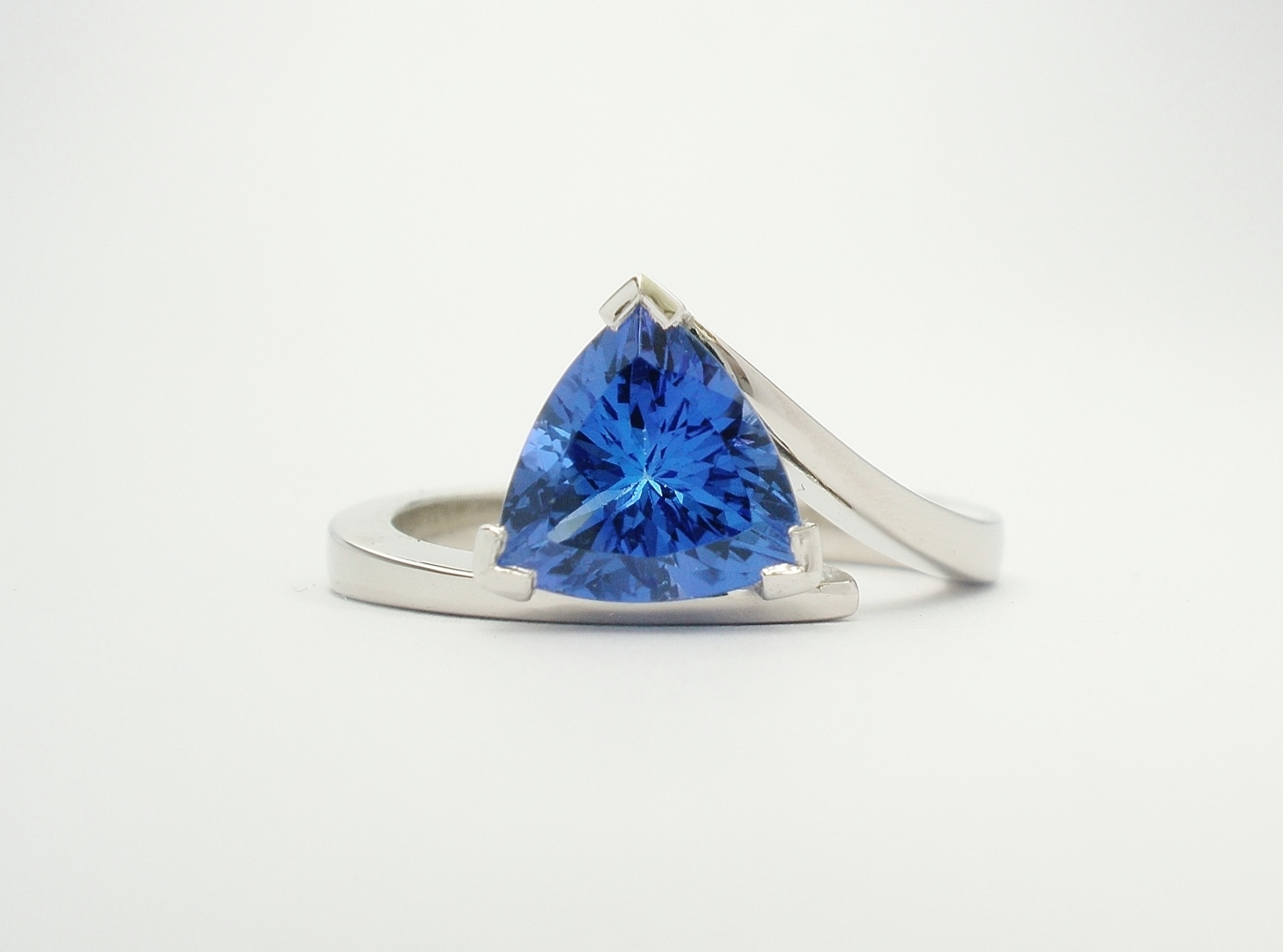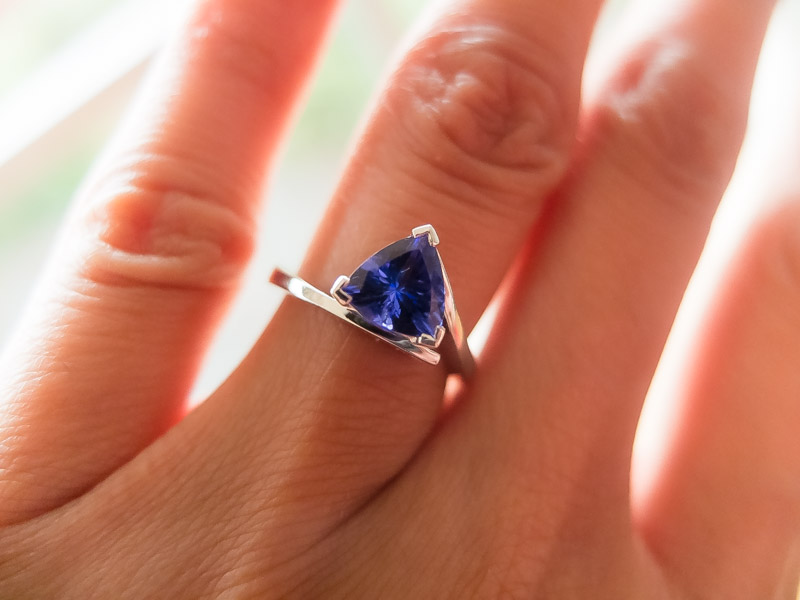Process
The main purpose of including this section within our website is to highlight how Alan’s approach to creating, in particular rings, differs from the vast majority of jewellers and his reasons for, and the benefits of, doing so.
In general the vast majority of large and small manufacturers and independent jewellery workshops do, and will create all gem rings from cast mounts, whether by the assembly of separate cast shanks and cast settings or indeed, increasingly, one piece castings. Although the assembly of cast shanks and settings, the setting of stones and the final polishing is done by hand this process is in the industry termed as hand finished. Unfortunately, some workshops mislead the lay person by classing this as handmade.
In contrast, by using traditional methods, Alan hand forges from wrought metals all his ring shanks and hand makes all settings from, in general, wrought platinum. His reasons for doing so are that wrought metal items are stronger and harder wearing than cast items – particularly important for rings – and forging allows for the creation of rings with greater finesse due to finer sharper lines and an overall higher polished finish all of which conveys elegance and sophistication.


